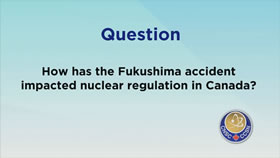Potassium Iodide - An Effective Protective Measure
May 20, 2014
Potassium iodide, often referred to by its chemical symbol KI, can be used to protect the thyroid gland from radioactive iodine that may be released into the air during a radiological emergency.
KI only protects the thyroid gland from radioactive iodine; it does not protect against any other nuclear substance.
Depending on the emergency, KI is one protective measure that could be used in isolation or in combination with other protective measures such as evacuation or sheltering in place.
During an emergency, all protective actions will be communicated clearly and effectively by provincial or local authorities.
How does it work?
The thyroid gland will absorb iodine that is in a person's bloodstream; it cannot tell the difference between radioactive iodine and non-radioactive (stable) iodine.
The absorption of radioactive iodine can be prevented by taking KI before or soon after its release into the air.
Taking KI will saturate the thyroid gland so that there is no space left for the radioactive iodine to be absorbed.
Over time, the radioactive iodine will undergo radioactive decay and be harmlessly excreted in the urine.
Why should KI be taken during an emergency?
Exposure to radioactive iodine could increase the risk of developing thyroid cancer.
By taking a KI pill as instructed, at the appropriate time, this risk could be greatly reduced.
While there are possible adverse effects to taking KI, such as allergic reactions, these effects are considered to be minimal when considering the alternative.
When should it be taken?
Not all radiological emergencies involve radioactive iodine and it is only required when there are significant amount of radioactive iodine present.
KI should only be taken when directed by public health officials.
KI works best when it is taken immediately before or as soon as possible after exposure.
Need more information? Visit the Health Canada or the CNSC website.
Page details
- Date modified:

